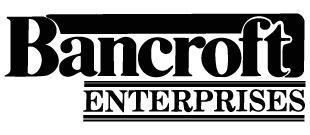Developing Your Corporate Identity
A corporate identity will span the course of your entire business, from your logo to your business cards and letterhead. It's designed to create a brand identity for your company, product or service, and evoke an emotional response from your audience.
Whatever your size, whether you're a mom and pop or an international megacorporation, a solid business identity can set you on equal footing with the competition. A solid identity can make a small company seem as large as the industry giants.
A corporate identity usually includes a graphic symbol will serves as a reflection of your company, audience and future goals. If done right, your identity will exude confidence and automatically invoke an immediate and positive consumer response.
Although it may be tempting to save money on your corporate identity, there are some things you shouldn't try to do on your own. Unless you have a graphic designer on staff, leave your corporate identity to the pros. That's not to say that you shouldn't be involved in the process, but look for professional help to get you started. If all goes well, this will be a permanent identity for your company, lasting for many, many years. Don't be afraid to seek help and spend a little money on this all-important component.
Your job primarily will be to define what will be your focus. Where has your company been, what are doing now and where are you headed? Surprisingly, many try to develop an identity without thinking about the future, but that's a mistake if you want your identity to support company progress.
Many companies think of a business identity as merely a logo or catchy phrase, and while both of these can be essential aspects, the identity extends far beyond the primary symbols. Your business identity should embrace the best aspects of your company. If you have the best customer service, your identity should support that. If you claim to be the leader when it comes to technology, the design should reflect that. Identify your key strengths and make those a point of focus.
Clarity should be another goal of your corporate identity, and many times that equates to simplicity. Dominating the visual landscape and incorporating all possibilities into one identity can prove confusing to your customers, or just plain annoying. Anything potentially confusing to consumers should be avoided at all costs.
When you begin to research your corporate identity, start by examining the competition. Find out what they do, how well they do it and what works for them. What does their identity say about their company? Do you see their logo across town and hear people asking about their company? Once you define their approach, examine your own company and define the strengths that will drive your corporate identity.
In the business world, you often hear the phrase, "location, location, location?" Likewise, when you're developing a business identity, the name of the game is "consistency, consistency, consistency." Everything should be consistent, from business cards and letterhead to marketing brochures and Web site. Even the interior design of your office should support your corporate identity.
Once established, your identity should accomplish three missions for you. It should inform your current customers and prospective new customers about who you are and what you do. It should persuade your target audience to act in a positive way toward your business, allowing you to grow as a company. Lastly, it should influence perceptions of your company in a positive direction.
